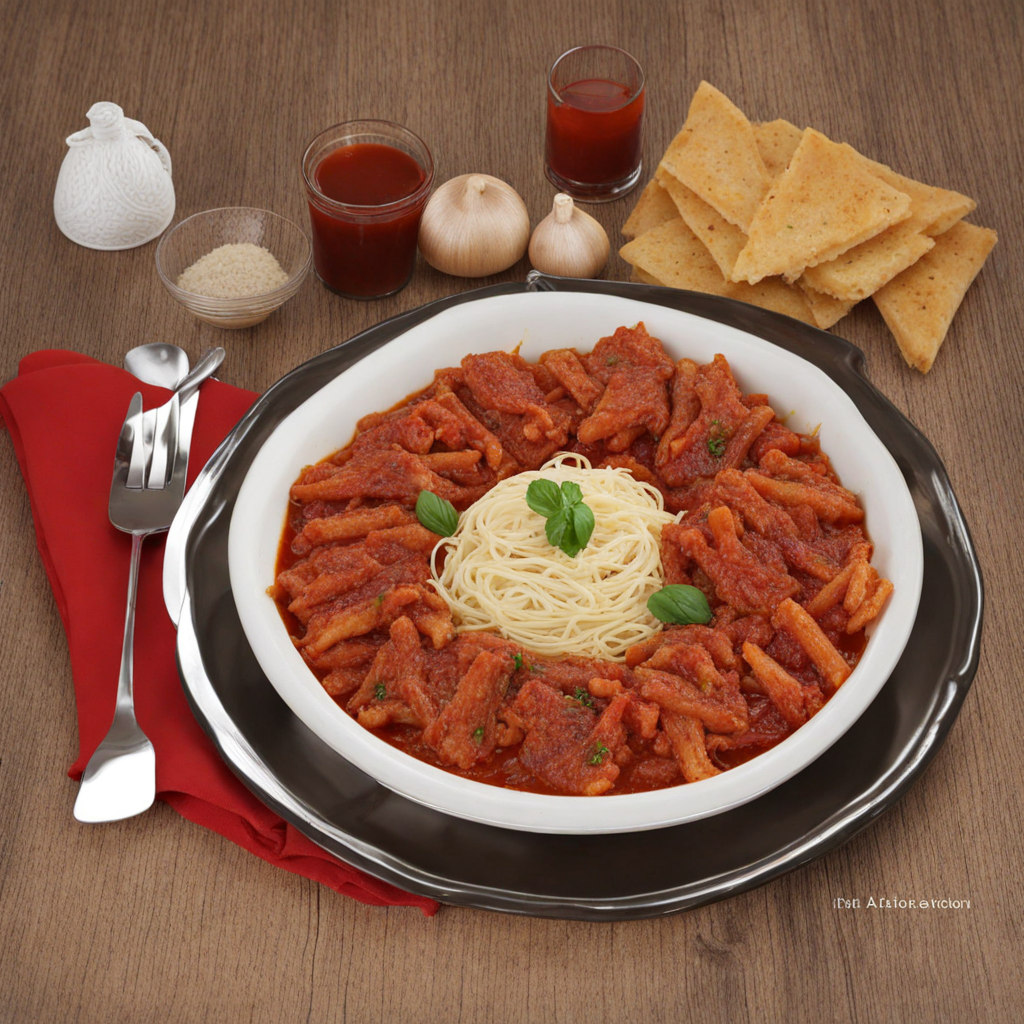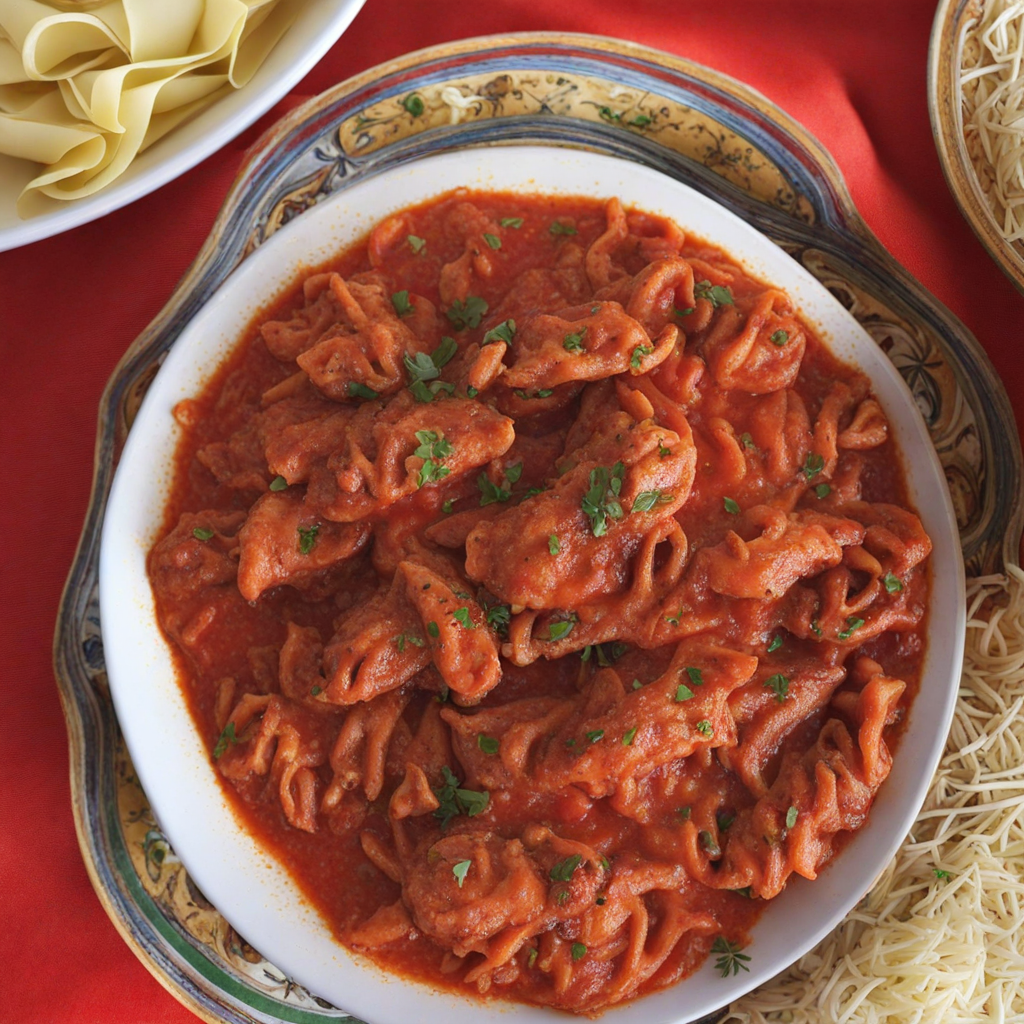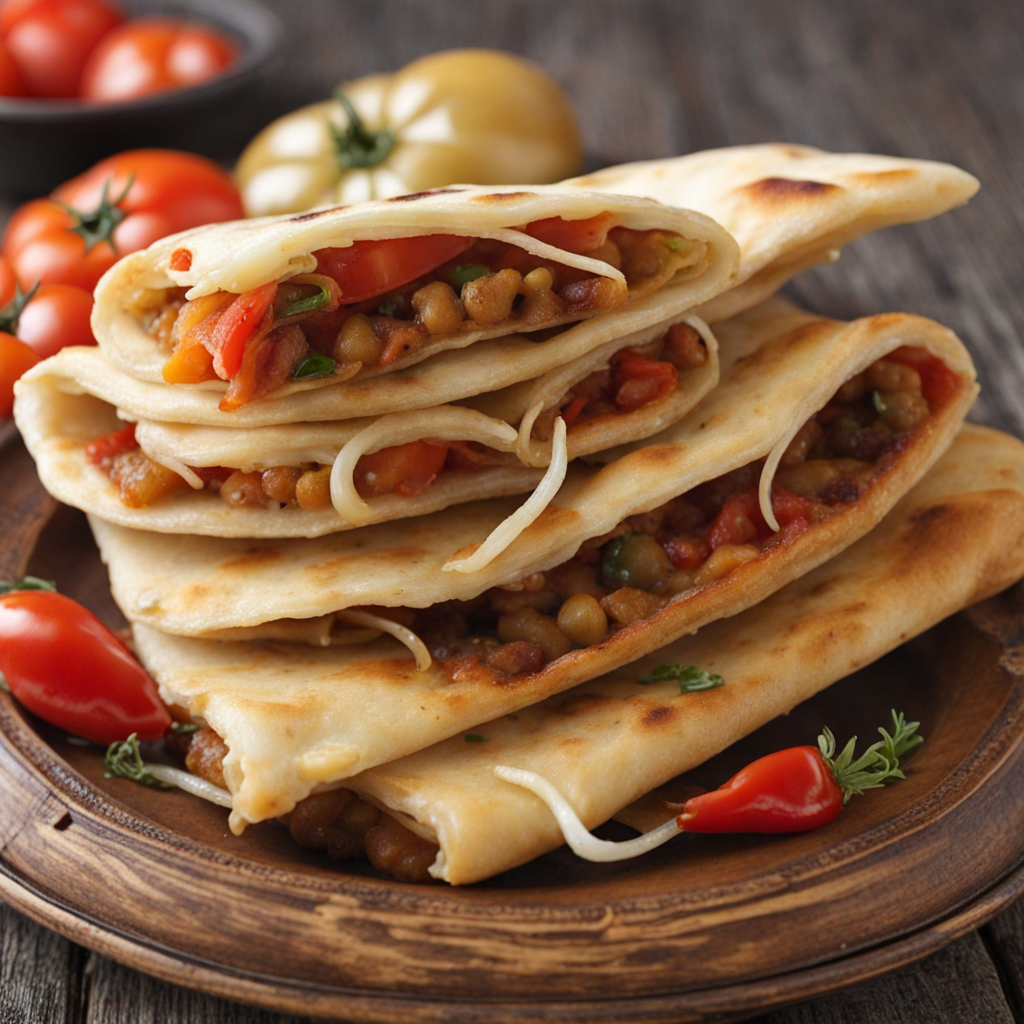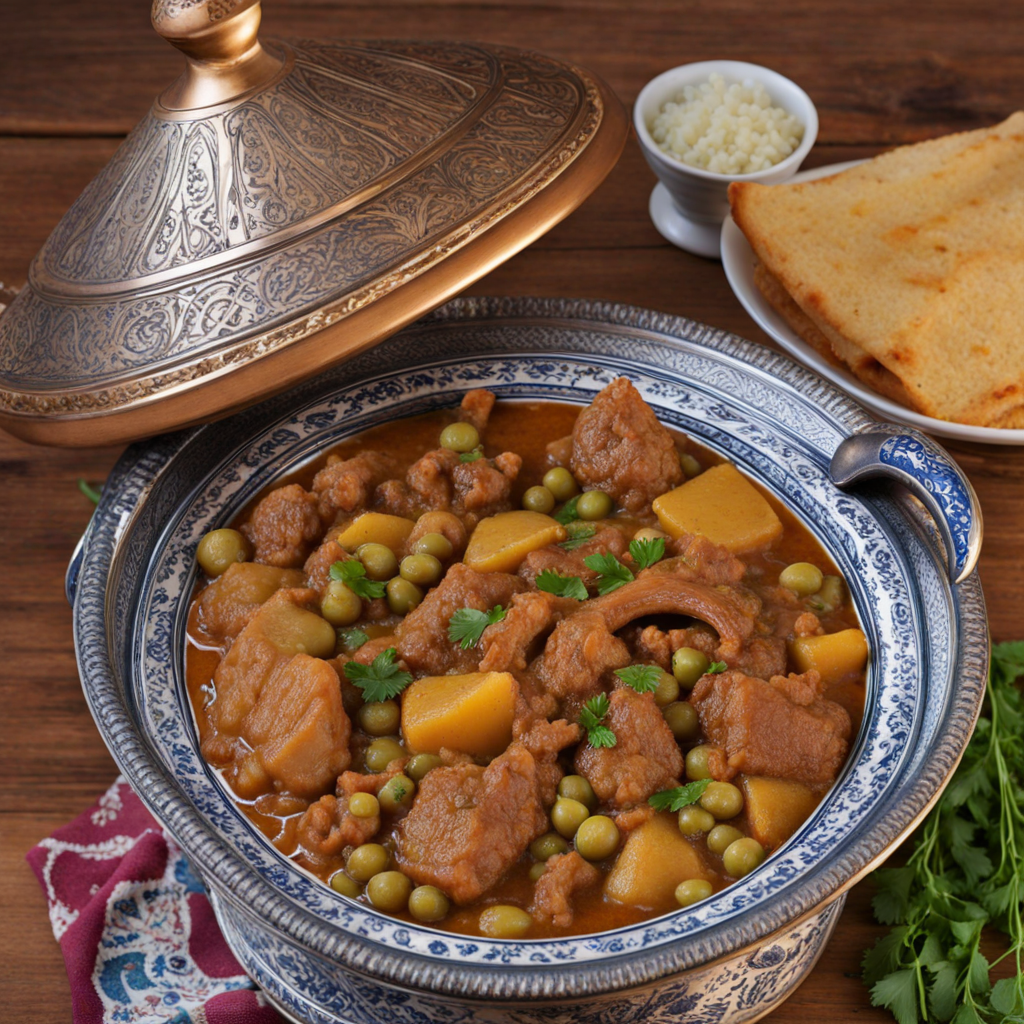Tlitli
Tlitli is a traditional Algerian dish that showcases the rich culinary heritage of the region, combining simple ingredients to create a flavorful and satisfying meal. At its core, Tlitli consists of thin, homemade pasta known as "tlitli," which is similar to small vermicelli. This pasta is typically served with a hearty stew made from tender pieces of meat, usually chicken or lamb, simmered with a medley of vegetables such as carrots, zucchini, and chickpeas. The dish is often infused with aromatic spices like cumin, coriander, and paprika, which lend it a warm and inviting flavor profile that is both comforting and exotic. The preparation of Tlitli is a labor of love, as the pasta is traditionally hand-rolled and cut into fine strands, making it a true artisanal creation. The cooking process involves layering the pasta with the stew, allowing the flavors to meld together beautifully. The dish is often garnished with a sprinkle of fresh herbs, such as coriander or parsley, which add a burst of color and freshness, while enhancing the overall taste experience. Served piping hot, Tlitli is a dish that invites sharing and is often enjoyed during family gatherings and special occasions. As you savor Tlitli, you'll find the delicate texture of the pasta complements the tender meat and vegetables perfectly, creating a delightful harmony of flavors with each bite. The dish is typically accompanied by a side of spicy harissa, a North African chili paste, which adds an extra kick for those who enjoy a bit of heat. Tlitli is not just a meal; it is a celebration of Algerian culture and hospitality, inviting you to explore the depth and warmth of its flavors while connecting with the traditions of the people who have lovingly prepared it for generations.
How It Became This Dish
The Culinary Journey of تليتلي (Tlitli) from Algeria #### Origins Tlitli, a traditional dish from Algeria, is a beautiful representation of the country’s rich culinary heritage and reflects its diverse cultural influences. The name "Tlitli" is derived from the Berber word "talit," which means “to boil” or “to cook.” This dish primarily consists of small pasta, often shaped like tiny grains or miniature pieces, and is typically served with a flavorful broth and a variety of meats, often chicken or lamb. The dish is particularly popular in the regions of Kabylie and the Aurès Mountains, where Berber culture has thrived for centuries. The origins of Tlitli can be traced back to the Berber tribes of North Africa, who have long been known for their agricultural practices and culinary traditions. The Berbers utilized local grains, such as semolina, to create their own unique pasta, which eventually evolved into the Tlitli we know today. The dish's preparation methods and ingredients have been passed down through generations, showcasing the resilience and adaptability of Berber culinary traditions in the face of historical challenges. #### Cultural Significance Tlitli is more than just a meal; it embodies the social and cultural fabric of Algerian life. It is traditionally served during family gatherings, celebrations, and significant cultural events, such as weddings and religious holidays. The preparation of Tlitli is often a communal activity, where family members come together to create the dish, reinforcing bonds and fostering a sense of community. The dish also showcases the harmony between food and hospitality in Algerian culture. When guests arrive, offering Tlitli is a sign of respect and warmth, illustrating the deep-rooted values of generosity and togetherness. In many households, the act of sharing Tlitli is accompanied by storytelling and laughter, creating an atmosphere of joy and connection. In addition to its communal aspects, Tlitli also serves as a culinary canvas for regional variations. Different areas of Algeria put their unique spin on the dish, incorporating local spices, herbs, and meats. For instance, in coastal regions, seafood may replace traditional meats, showcasing the abundant maritime resources. This adaptability is a testament to the dish's enduring appeal and its capacity to reflect the local culture and geography. #### Development Over Time As Algeria experienced various historical influences, so too did Tlitli undergo transformations. The arrival of Arab and Ottoman influences in the 7th century significantly impacted Algerian cuisine, introducing new spices, cooking methods, and ingredients. The incorporation of spices such as saffron, cumin, and coriander into Tlitli reflects this cultural exchange, enhancing the dish's flavor profiles and elevating its status in Algerian culinary traditions. During the French colonization of Algeria from the 19th to mid-20th century, traditional dishes like Tlitli faced challenges as Western culinary practices permeated the local food culture. However, Algerians fiercely retained their culinary identity, and Tlitli became a symbol of resistance against cultural assimilation. Families continued to prepare the dish using traditional techniques, ensuring that the recipe remained alive despite external pressures. In the post-colonial era, as Algeria navigated its newfound independence, Tlitli experienced a renaissance. Chefs and home cooks alike sought to revive and celebrate traditional Algerian cuisine, leading to a resurgence of interest in Tlitli and other indigenous dishes. Food festivals and cultural events began to highlight Tlitli, showcasing its significance in Algerian identity and heritage. #### Modern Interpretations Today, Tlitli is enjoyed both in homes and in restaurants across Algeria and beyond. While traditional recipes remain cherished, modern interpretations have emerged, adapting the dish for contemporary tastes. Some chefs experiment with fusion elements, incorporating international ingredients or techniques while maintaining the essence of Tlitli. This creative evolution reflects the dynamic nature of cuisine, where tradition and innovation coexist. Moreover, the global interest in Algerian cuisine has led to a growing appreciation for Tlitli outside of Algeria. Food enthusiasts and travelers are increasingly drawn to the dish, seeking authentic experiences that connect them to the rich history and culture of the region. Social media platforms have played a pivotal role in this culinary exchange, allowing home cooks and chefs to share their Tlitli recipes, techniques, and personal stories with a wider audience. #### Conclusion Tlitli is a testament to Algeria's rich culinary heritage, embodying the spirit of community, resilience, and cultural pride. From its Berber origins to its modern interpretations, Tlitli has evolved while remaining rooted in tradition. The dish serves as a bridge between generations, connecting people through shared memories and experiences centered around food. As Algeria continues to navigate the complexities of modernity, Tlitli stands as a symbol of cultural identity, reminding us of the importance of preserving culinary traditions in a rapidly changing world. Whether enjoyed at a family gathering, a local restaurant, or a food festival, Tlitli invites all to partake in a journey through history, culture, and the flavors of Algeria. It is a dish that nourishes both the body and the soul, celebrating the beauty of connection through the universal language of food.
You may like
Discover local flavors from Algeria







